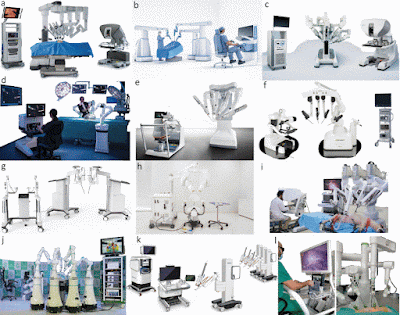Article intro - Surgical Robotics in the Data Age
Our major article on the state-of-the-art in RAMIS surgical robots appeared in the Proceedings of the IEEE special issue: "Robot-Assisted Minimally Invasive Surgery—Surgical Robotics in the Data Age" by Tamás Haidegger; Stefanie Speidel; Danail Stoyanov; Richard M. Satava.
Abstract
Telesurgical robotics, as a technical solution for robot-assisted minimally invasive surgery (RAMIS), has become the first domain within medicosurgical robotics that achieved a true global clinical adoption. Its relative success (still at a low single-digit percentile total market penetration) roots in the particular human-in-the-loop control, in which the trained surgeon is always kept responsible for the clinical outcome achieved by the robot-actuated invasive tools. Nowadays, this paradigm is challenged by the need for improved surgical performance, traceability, and safety reaching beyond the human capabilities. Partially due to the technical complexity and the financial burden, the adoption of telesurgical robotics has not reached its full potential, by far. Apart from the absolutely market-dominating da Vinci surgical system, there are already 60+ emerging RAMIS robot types, out of which 15 have already achieved some form of regulatory clearance. This article aims to connect the technological advancement with the principles of commercialization, particularly looking at engineering components that are under development and have the potential to bring significant advantages to the clinical practice. Current RAMIS robots often do not exceed the functionalities deriving from their mechatronics, due to the lack of data-driven assistance and smart human–machine collaboration. Computer assistance is gradually gaining more significance within emerging RAMIS systems. Enhanced manipulation capabilities, refined sensors, advanced vision, task-level automation, smart safety features, and data integration mark together the inception of a new era in telesurgical robotics, infiltrated by machine learning (ML) and artificial intelligence (AI) solutions. Observing other domains, it is definite that a key requirement of a robust AI is the good quality data, derived from proper data acquisition and sharing to allow building solutions in real time based on ML. Emerging RAMIS technologies are reviewed both in a historical and a future perspective.
Source: IEEE




Comments